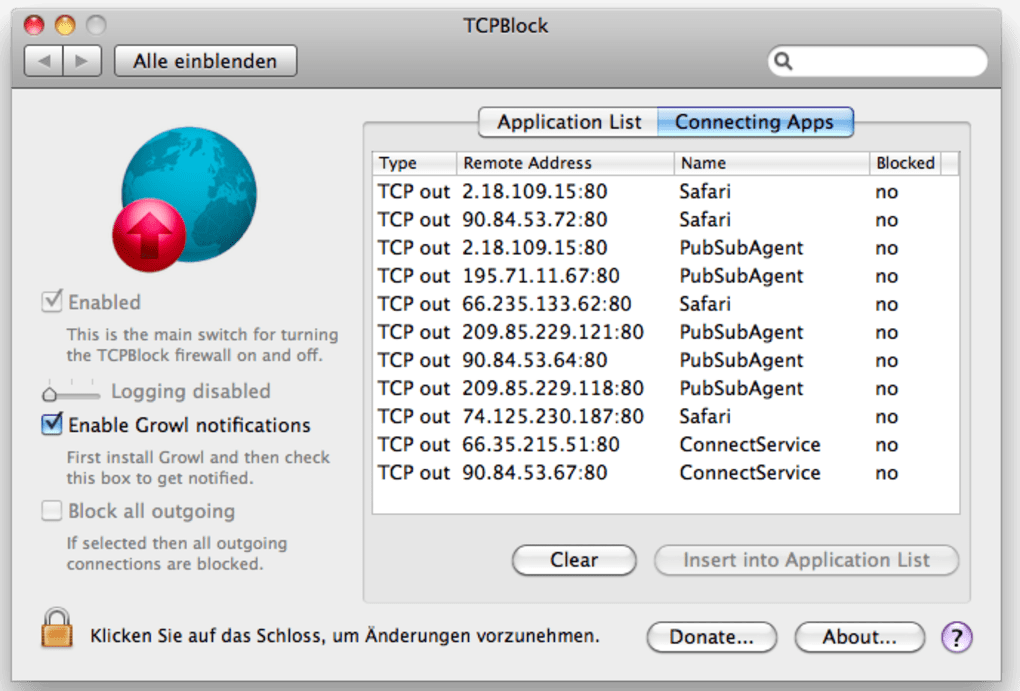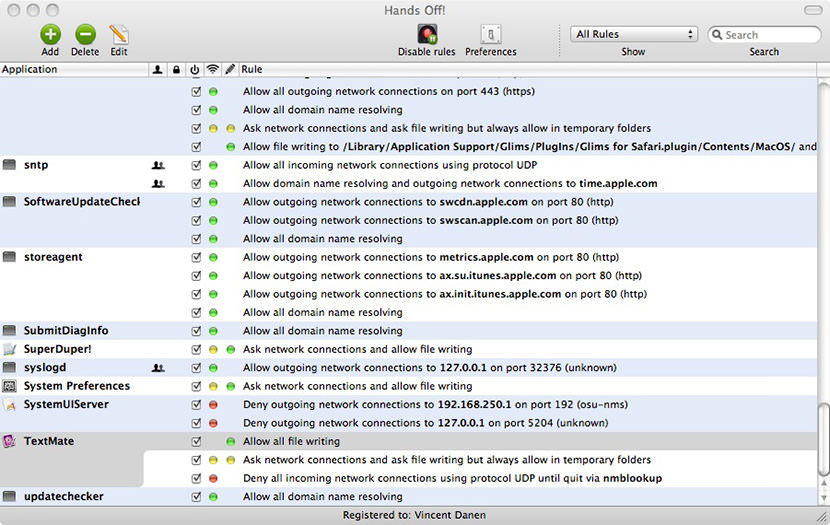
- #MAC BLOCK OUTGOING CONNECTIONS FOR APP FULL#
- #MAC BLOCK OUTGOING CONNECTIONS FOR APP WINDOWS 10#
- #MAC BLOCK OUTGOING CONNECTIONS FOR APP DOWNLOAD#
- #MAC BLOCK OUTGOING CONNECTIONS FOR APP WINDOWS#
#MAC BLOCK OUTGOING CONNECTIONS FOR APP WINDOWS#
#MAC BLOCK OUTGOING CONNECTIONS FOR APP WINDOWS 10#

#MAC BLOCK OUTGOING CONNECTIONS FOR APP FULL#
If you use any peer-to-peer applications like Transmission or uTorrent, you will need to allow it full network access for it to operate normally. From there, you can block specific domains if you need to. Therefore, giving it a fully open rule would be the smart decision. For example, a web browser like Google Chrome, Safari, or FireFox will need to connect to multiple domains and ports. When creating filters, ask yourself "What does this application need to do?". Selecting a locked rule will show a description of why it's locked on the side. while you can disable them, you cannot (and should not) delete them. Most of these rules have a lock on them, and are required for normal system operation. When you load up Little Snitch for the first time, you will see that there are already a lot of rules created for you. Don't worry, Little Snitch doesn't overwrite that program, it just replaces it. This is because Little Snitch replaces a program called iptables, which is used for system networking. However, you will need to restart your system after installing.
#MAC BLOCK OUTGOING CONNECTIONS FOR APP DOWNLOAD#
It's not hard to set up Little Snitch, just a simple download and install. This is where Little Snitch defines itself, by letting you control all connections, rather than half. The default firewall only covers incoming connections, but allows all applications to make outgoing connections without restriction. While it is true that OS X has a built in firewall, it's only half as good as Little Snitch. For example, normal web browsing is done through port 80, secure web browsing is done through port 443, and file transfer is done through 21. However, there isn't just one door for every single network connection to go through, there are hundreds! Each of these doors is called a port, and each port is used for different purposes. This helps keep unwanted network connections from entering your computer, or in some cases, leaving it. Based on your rules, and its assumptions it will allow and deny connections through that door. You can get Little Snitch from Objective Development for $34.95.Ī firewall is a virtual door controlled by an application on your computer that lies between your computer and the internet.

Little Snitch is an advance firewall application exclusively for OS X that allows you to control where an application can communicate to on the Internet. But some times there are some applications that just don't need to communicate with the Internet, or even worse, some apps that send information about your computer and how you use the app without your permission or even knowledge.

All of these conversations - held in the background - help keep your system and applications running at tip top shape. Your computer, regardless of if you're using it or not, is constantly communicating with the Internet.


 0 kommentar(er)
0 kommentar(er)
